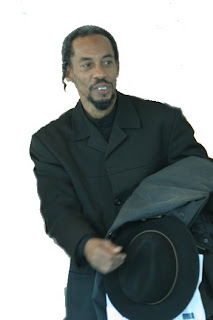Monday, October 29, 2007
Thursday, October 25, 2007
appreciating my indigenous heritage
Santa Rosa is but a vestige of the colonial and religious Spanish zeal diluted with indigenous, African and Asian traditions. The Spanish gave up Trinidad to the English without a battle, being unable to defeat the Ineri (the original inhabitants). But continuing in another vein, permit me to interject that your and my history is so inter-linked that there is obviously no way we can undo those ties. For instance, after the French revolution, a lot of French planters fleeing Haiti (then renamed Santo Domingo) were allowed to settle in many islands under control of the British. This was called the Cedula of Population, circa 1738. This is the plan that allowed the cousin of Marie Antoinette (a ruthless planter named Count Beggorat) and many others to bring their slaves, their language, culture, and their Catholic religion and despicable attitude toward blacks and to settle in my village, Diego Martin, in and other lush parts of Trinidad, under Spanish law but governed by the British. This is an example of the united Europeanisation of the region......"
from an interview of Roi Kwabena by Dr Eric Doumerc
Wednesday, October 17, 2007
Legacies to be cherished....

"... Our children need to be told of the efforts of those chanting stick-fighters, drummers (the drum is still banned by archaic European laws retained in the so-called colonies to this day), even those women whose heroic organising planted the seeds for the trade-union movements, tamboo-bamboo players whose inventiveness led to the steel pan (the greatest musical invention for the 21st Century), played all over the world yet to be included on my country's education curriculum), forgotten reformers who bled for a nationalism which is forsaken today.
From a musical point of view, our Kaiso has grown and gave birth to calypso, soca ragga, and chutney (the latter with the influence of Asians). But sensible lyrics have been banished. Even double-entendre, humour and messages have disappeared, so that today only synthesisers, electronically programmed rhythms, gyrating waists and waving a sweat-soaked rag are in vogue (very much reminiscent of the old days when the French bourgeois waved their handkerchiefs in such like processions. So yes, these aspects of my culture do give me energy to continue writing...."
Excerpt of an interview with Roi Kwabena by Dr Eric Doumerc,
University of Toulouse-Le Mirail, France



